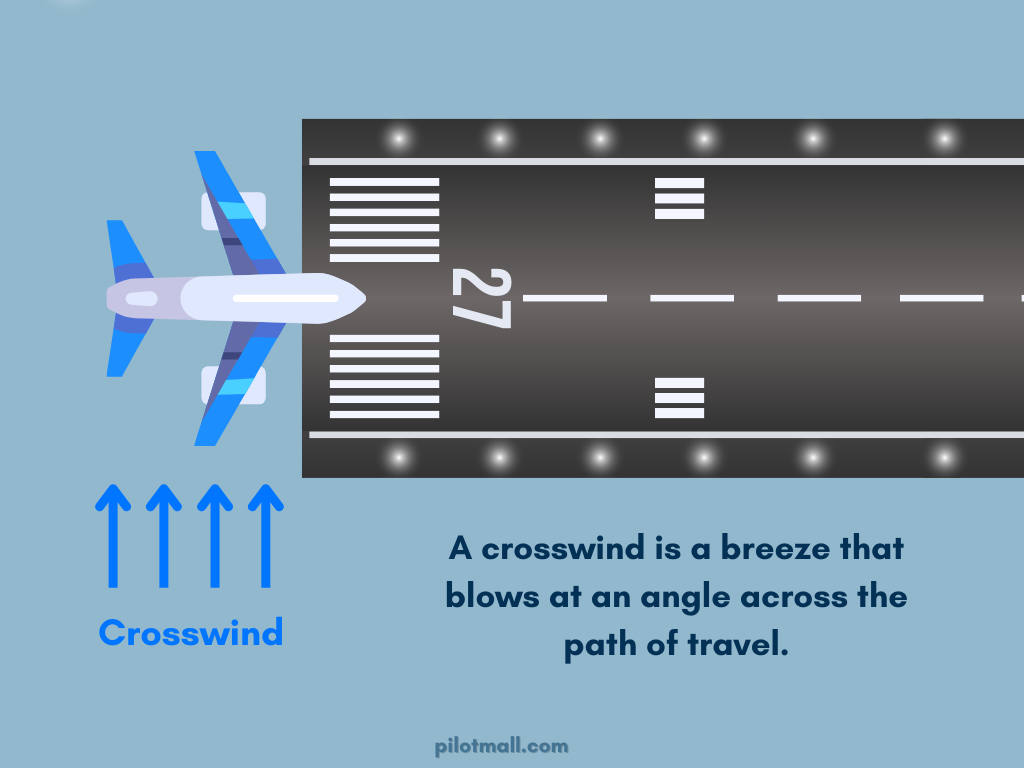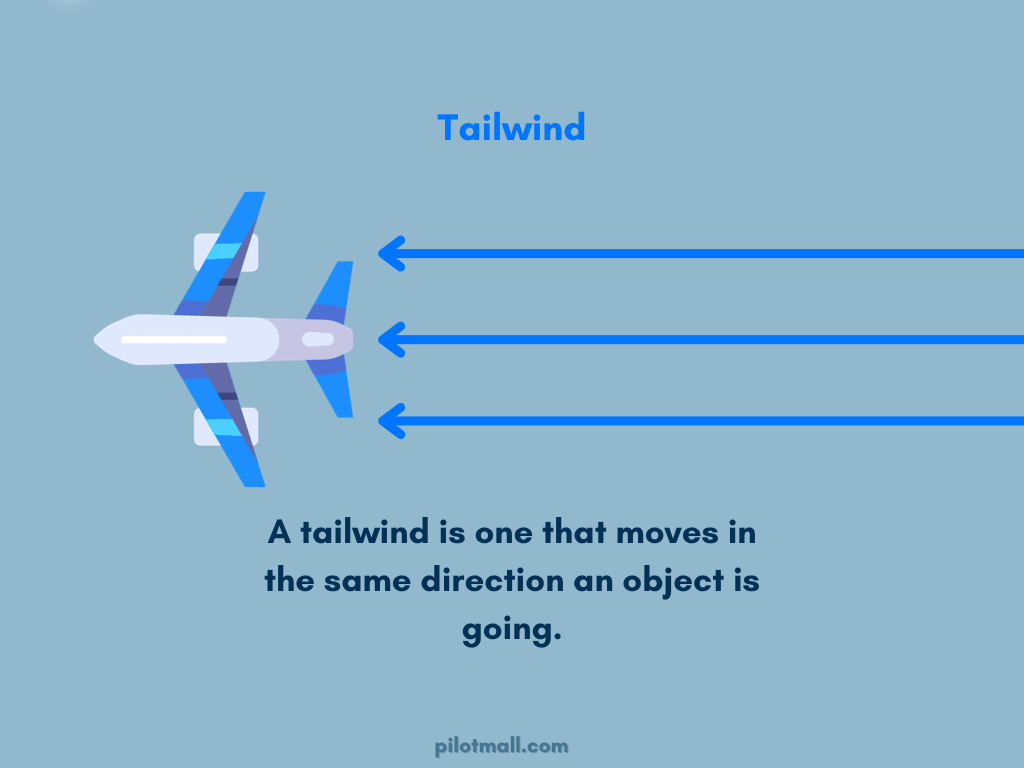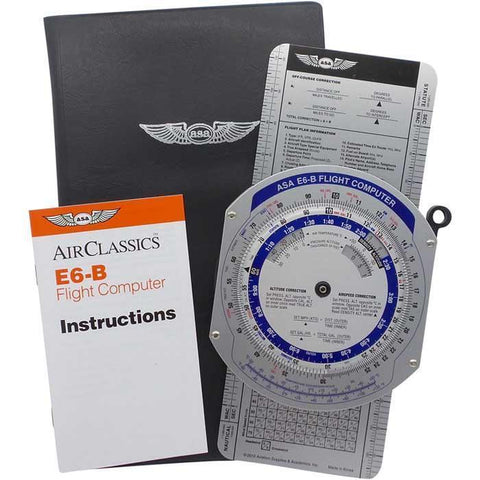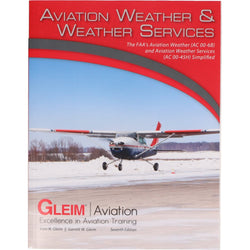It won't take long for you to realize the moment you start your flight training how much of a game-changer winds and crosswind components can be. When it's time to plan your first journey, the thought of having to make sense out of all the information needed for your cross-country flight could seem impossible. But have no fear! We're here to help you master the skills you need as a pilot.
So let's get started and learn how to calculate a crosswind component like a professional pilot!
 The Three Wind Components
The Three Wind Components
Alright, so in order to make sure that your flight planning, take-off, and landing goes off without a hitch, there are three main wind components you have to factor in. These are the crosswind component, the tailwind component, and the headwind component. Let's spend a second going over each one so you understand how to prepare.
Crosswind component
A crosswind is a breeze that blows at an angle across the path of travel. When the wind current is not on the runway heading this creates a runway, pilots will have to use a different type of landing and takeoff technique known as a crosswind landing.
A pure crosswind takes place when the wind is exactly perpendicular to the direction the airplane is moving in.
Tailwind component
A tailwind, as the name suggests, is a current of wind that blows in the same direction that an object is moving, propelling it forward with a greater velocity and ease.
Headwind component
A strong flow of air that moves contrary(or opposite) to the aircraft's motion is referred to as a headwind, creating an increase in the time and fuel needed for the flight.
Fast Crosswind Calculations
Everything with these calculations comes in threes, there are three pieces of information you need and three main methods to figure out your answer.
The information you'll need is:
-
The aircraft heading (or runway heading)
-
The wind direction
-
The wind velocity
3 Easy Steps - Degrees Difference
The fastest and easiest way to run a mental crosswind calculation is to use an estimation based on degrees of angular difference. It might sound complex, but it is actually easier than you think once you break it down.
-
0°-20° estimate 0% crosswind (for no crosswind)
-
20°-40° estimate 50% crosswind
-
40°-50° estimate 70% crosswind
-
50°-70° estimate 90% crosswind
-
70°-90° estimate 100% crosswind (for full strength crosswind)
Example:
If we use runway 23, winds 200°, and a 14 knots wind speed,
- Find the difference: the angular difference between 230 and 200 is 30,
- Convert the difference to the degree estimation: The 30 difference becomes 30° which would be a 50% crosswind.
- Multiply the percentage by the wind speed.
50% x 14 = 7 knots
3 Component Calculating Methods
There are three quick ways to calculate the crosswind component in addition to our 3 steps.
-
The Clock Method
-
Divide by Ten Method
-
The Chart Method
5 Easy Steps - Divide by Ten
Another method pilots who are good with mental math like to use is the divide by ten methods, which can be quickly jotted down on a kneeboard easily in 5 simple steps.
Example:
Let's use the same heading and wind information we used in the 3 step; runway 23, the winds are at 200°, with a 14 knots wind speed.
Divide the wind by ten, then determine the difference between the runway heading and the wind direction.
The crosswind component is 7 knots.
You can check out more of these methods in greater detail in our Crosswind Landings guide.
 Why Pilots Need Mental Calculations
Why Pilots Need Mental Calculations
The weather can change quickly and there might not always be time to pull out your charts or E6B and run calculations. Quick mental estimations can help a pilot have a faster response time to adjusting for crosswinds.
If you're determined to make a career in this field, professional pilots need to take the time to make mental calculations before attempting crosswind landings. As with any challenge, in aviation, it's critical to stay one step ahead of your aircraft.
Avoid Being Intimidated
It is important to not be intimidated, because eventually, with enough practice, mental estimations can become easy. Take advantage of apps and online-calculators with quick reference guides and use them to help you calculate your numbers. Even if you have a fancy EFB or GPS, it's still going to benefit you as a pilot to have the ability to do these calculations quickly without any technology at all.
It can also be useful to review the habits, techniques, and videos of other experienced pilots—see what did or didn't work best for them and apply it to your own skillset. Every pilot is different, but learning from others can only help you to further perfect your flying technique.
When it comes to an emergency situation though, take a moment and pause. Gather yourself before making any quick decisions that could prove dangerous. If the crosswind speed is too strong, go-missed and head for your alternate, and set personal minimums you are comfortable with.
Aviation is about precision and accuracy for the sake of safety, so stay within your limits and rely on what you know—your trained techniques—and you will be successful.

Frequently Asked Questions
-
How is crosswind correction calculated?
The crosswind correction is calculated through the formula of the wind speed × sin(α) of the angle between the wind and the runway.
-
What is the maximum allowable crosswind component?
Usually, your POH will inform you of the aircraft's maximum demonstrated crosswind component. However, you can legally land in winds stronger than the maximum, but it is not advisable.
-
How do you use a crosswind component chart?
To calculate crosswind components with a crosswind chart you will need the wind direction (angle) and wind speed (headwind).
You can check out our crosswind landing guide for how to use the crosswind component chart.
-
What is the easiest method for calculating a crosswind component?
For many pilots, the clock method is their go-to when they want to run a quick calculation.
Takeaway
Learning how to do crosswind calculations without the aid of an E6B flight computer, is a critical skill that every pilot should try to develop. Understanding the crosswind component chart can help improve proficiency, enabling pilots to navigate challenging crosswind landings. The ability to adapt to varying wind conditions, even when the wind is blowing in the same direction as the runway, highlights a pilot's capabilities.
In the often dynamic area of aviation, practice, and experience in crosswind scenarios are the key to becoming a better skilled and adaptable pilot in the air.
Fly safe!
Want to know more techniques?
Check out these guides!
Did you find this article helpful?
Do you think we missed anything important? Let us know in the comments below!












